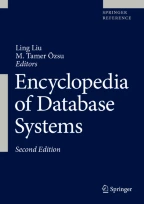Synonyms
Signatures
Definition
In general, given a message M, the digital signature of M generated by a signer S is a bit string univocally bound to M and some secret key known only by S. In practice, since digital signature schemes are based on asymmetric cryptography, the digital signature of M generated by S is a bit string dependent on M and the private key of S. Digital signature schemes have the property that signatures generated with a private key can be validated only by the corresponding public key. This ensures the authenticity of the message. Moreover, any modification on the signed message will invalidate the signature itself. This means that if the signature is validated it provides an evidence that the message has not been altered after the digital signature has been applied on it. This ensures the integrity of the message.
Historical Background
The notion of digital signature appeared in 1976 in a paper by Diffie and Hellman [1], where it has been introduced, for the...
Access this chapter
Tax calculation will be finalised at checkout
Purchases are for personal use only
Recommended Reading
Diffie W, Hellman M. New directions in cryptography. IEEE Trans Inf Theory. 1976;IT-22(6):644–54.
Jonsson J, Kaliski B. Public-Key Cryptography Standards (PKCS) No. 1: RSA Cryptography. Request for Comments 3447, Feb 2003.
Kravitz DW. Digital signature algorithm. 1993. U.S. Patent No. 5, 231, 668.
Menezes AJ, van Oorschot PC, Vanstone SA. Handbook of applied cryptography. CRC; 1996.
Ntional Institute of Standards and Technology. Secure Hash Standard. Federal Information Processing Standards Publication, FIPS 180–1, 1995.
National Institute of Standards and Technology. Digital Signature Standard (DSS). Federal Information Processing Standards Publication, FIPS 186–2, 2000.
Rivest RL, Shamir A, Adleman LM. A method for obtaining digital signatures and public-key cryptosystems. Commun ACM. 1978;21(2):120–6.
World Wide Web Consortium. XML-Signature Syntax and Processing. W3C Recommendation, 2002.
Author information
Authors and Affiliations
Corresponding author
Editor information
Editors and Affiliations
Section Editor information
Rights and permissions
Copyright information
© 2018 Springer Science+Business Media, LLC, part of Springer Nature
About this entry
Cite this entry
Carminati, B. (2018). Digital Signatures. In: Liu, L., Özsu, M.T. (eds) Encyclopedia of Database Systems. Springer, New York, NY. https://doi.org/10.1007/978-1-4614-8265-9_131
Download citation
DOI: https://doi.org/10.1007/978-1-4614-8265-9_131
Published:
Publisher Name: Springer, New York, NY
Print ISBN: 978-1-4614-8266-6
Online ISBN: 978-1-4614-8265-9
eBook Packages: Computer ScienceReference Module Computer Science and Engineering
